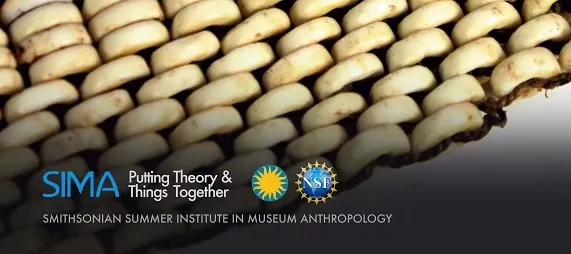Search
SIMA Application Instructions
Applications must be submitted online at Smithsonian SOLAA. A completed application must include the following:
(1) Statement of Interest
(2) Proposed Research Project
(3) Letter(s) of Support
Applications are due March 1, 2024. Applicants will be notified whether they were selected for the program by April 1. The program will be June 24-July 19, 2024.
SOLAA Guidance for Applicants
1. To begin, go to Smithsonian SOLAA (si.edu)
2. Log in:
- Log in to existing account – Click on “Start Your Application”
- Log in to create an account - First time applicants must first create a SOLAA account
3. Select “Start an Application”
4. Select the Program Category “Internship.”
5. Search “Office/Museum/Research Center” and select “NMNH-National Museum of Natural History”
6. Review the listing and select Summer Institute in Museum Anthropology (SIMA). Select “Details” and “Show More” to see what is required.
8. When ready, select “Apply Now”
9. Complete all application aspects
10. Click SUBMIT
Uploaded proposal materials should be sent as a Word document, with the applicant’s name included on each page.
Statement of Interest
Your statement should address the following:
- Why do you want to participate in the Summer Institute in Museum Anthropology?
- What is your educational background, and past and current research activities? (Tell us about related courses you have taken, such as art, material culture, representation, theory, history of anthropology, museology, or materiality studies.)
- What are your future plans relating to museum and archival research? You should demonstrate how this training will facilitate your thesis, dissertation, or other specific research goals. (We are specifically looking for graduate students who will conduct museum-based research during their careers; previous efforts to work with objects, photographs, film, or video may suggest such a commitment. Students who want to work with objects in museum collections but who have had no previous experience should discuss how research with objects will be a component of their future graduate research plans.)
- If you are not enrolled in an Anthropology program, tell us how your work relates to current issues in anthropology. We will consider students from any field who can make a clear case that their work with museum objects will make a contribution to the field of cultural anthropology.
Proposed Research Project
The statement of your individual research project (1 page maximum) is not expected to be a fully developed proposal, but rather a suggestion of the kinds of materials you would like to study during the summer and how you hope these materials can be used. It should describe how studying a particular group of objects, a type of object found in a variety of museums, or the material from a particular locality or cultural region might be used to address your inquiry. The project should be suitable for eventual development into a publishable paper.
- State the question, hypothesis, or issue you hope to address.
- Describe how the data you plan to collect is applicable to the question or issue you have raised and briefly note what materials in the Anthropology Department collections you would like to use in addressing this question. (Please consult the collection databases in order to confirm that there are at least some objects suitable for your analysis. You may note other Smithsonian resources that may be useful but the NMNH Anthropology object collection must be your primary learning site.)
Many students change their proposed projects somewhat during the course of the Summer Institute: you will not be limited to the questions, issues, or materials that you propose in your application. Descriptions of past student projects may be useful in thinking about how to fashion your proposal.
Letters of Support
Letter(s) of support from faculty must cover two issues:
- One letter should be a reference from someone who knows your past academic work well. It should critically evaluate your academic performance in classroom and other fieldwork (including lab and hands-on courses) in terms of GPA, likelihood of completing a doctorate, and individual potential for success in research and publication. He or she should also describe your likelihood of applying this training, and your potential for success in a research career that will include cultural anthropological research.
- The other letter must be from an anthropologist on the faculty, confirming his or her commitment to formally supervising the student's project in the year after participating in SIMA. It should indicate a personal commitment to advising the student as he or she continues to develop the project initiated during SIMA, which is expected to lead to a publishable paper. Describe the formal role this supervision will take, such as dissertation advisor, thesis committee member, supervisor for independent study course, etc.
One letter covering both issues may be submitted if the same person can serve as both a reference and as a future project supervisor.

This material is based upon work supported by the National Science Foundation under Grant Numbers BCS-1127060, BCS-0852511, BCS-1424029, BCS-1824641 and BCS-2317314